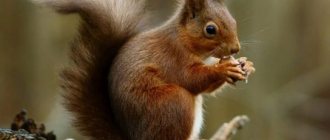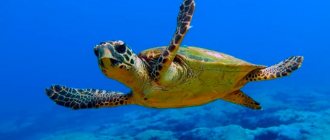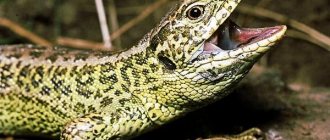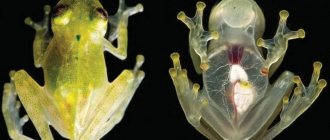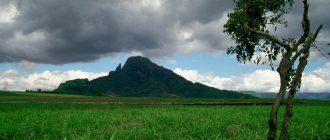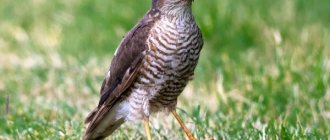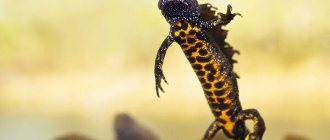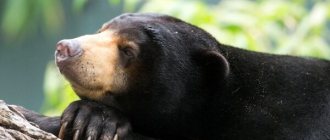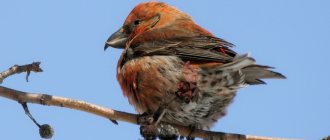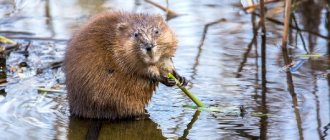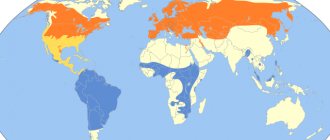- Wild animals
- >>
- Reptiles
The black snake is one of several species of venomous snakes most commonly found in humans and pets in Australia. It can be between one and a half to two meters long and is one of the largest snakes in Australia. She is also one of the most beautiful snakes with a glossy black back. It has a small, streamlined head and a lighter brownish muzzle.
Origin of the species and description
Photo: Black snake
The black snake (Pseudechis porphyriacus) is a species of snake found in eastern Australia. Although its venom is capable of causing significant morbidity, the bite of a black snake is generally not fatal and is less poisonous than the bite of other Australian snakes. It is common in woodlands, forests and swamps of eastern Australia. It is one of Australia's most famous snakes, as it is common in urban areas along the east coast of Australia.
There are four types of black snakes:
- red bellied black snake;
- Collette's snake;
- Mulga snake;
- blue-bellied black snake.
Video: Black snake
The black snake genus includes some of Australia's most beautiful snakes, as well as (possibly) its largest venomous species, the mulga snake (sometimes called the "king brown"). At the other end of the size spectrum from the mulga snake are the pygmy mulga snake, some of which rarely exceed 1 meter in length. Black snakes are ecologically diverse and are found across most of the continent, with the exception of the extreme southwest and Tasmania, in almost all habitat types.
Interesting Fact: Although red-bellied black snakes are feared, bites from these snakes to humans are actually uncommon and often result from direct human interaction with the snake.
In the amateur herpetological community, red-bellied black snake bites are often not taken seriously, which is unwise, since irreversible myotoxicity can be caused by envenomations of this snake if antivenom is not administered promptly (within 6 hours of the bite).
Unlike many other Australian venomous snakes, black snake bites can be associated with significant local damage, including necrosis (tissue death). As a result, in many cases parts and even entire limbs had to be amputated after being bitten by these snakes. Another unusual consequence of black snake bites is transient or permanent anosmia (loss of smell).
Is it dangerous for humans?
The Nikolsky snake is poisonous, and its venom has been compared to that of rattlesnakes. But representatives of this species produce much less poison compared to the rattlesnake. Therefore they are considered less dangerous.
At the moment of attack, special lateral muscles in the snake’s mouth push the poisonous teeth forward and they take a vertical fighting position. The bite of this reptile rarely leads to the death of people. But the forest-steppe viper should not be considered completely safe for humans.
A person who has been bitten by a forest-steppe snake should seek medical help. Its venom contains substances that can cause hemorrhagic swelling and even tissue necrosis in the bite area. A person who is bitten may experience headache, lethargy, dizziness, shortness of breath and nausea.
In the future, the bitten person may face acute anemia and intravascular coagulation. In especially severe cases, trophic changes in the kidneys and liver are observed.
In summer, the poison of black reptiles is less toxic than in spring.
Appearance and features
Photo: What a black snake looks like
The red-faced black snake has a thick body with a slightly pronounced head. The head and body are glossy black. The undersides are red to cream with bright red undersides. The tip of the nose is usually brown. The red-bellied black snake has a prominent eyebrow, giving it a distinctive appearance. It can reach more than 2 meters in length, although snakes around 1 meter in length are more common.
Fun Fact: In the wild, red-bellied black snakes typically maintain their body temperature between 28°C and 31°C during the day, moving between sunny and shady areas.
The Colletta snake belongs to the black snake family and is one of the most beautiful venomous snakes in Australia. The Collette's snake is a strongly built snake with a strong body and a broad, blunt head barely distinguishable from its body. It has an irregular striped pattern of reddish to salmon-pink spots on a darker brown or black background. The top of the head is uniformly dark, although the muzzle may be slightly paler. The iris is dark brown with a reddish-brown rim around the pupil. The ventral scales are yellow-orange to cream.
Juvenile black mulga snakes may be of medium build, but adults are usually quite robust, with broad, deep heads and prominent cheeks. On the back, sides and tail they are usually bi-colored, the darker color covering the distal portion to varying degrees and may be brown, reddish-brown, copper-brown or brownish-black.
The base of the snake is usually yellowish-white to greenish-yellow, contrasted with a darker color to produce a reticulated effect. Individuals from the far northern arid regions have little to no darker pigment, while southern populations are almost black. The tail is generally darker than the body, and the top of the head is a uniform color similar to the darkness of the body scales. The eyes are relatively small with pale reddish-brown irises. The belly is cream to salmon colored.
Blue-bellied black snakes are predominantly shiny bluish or brownish black, with a dark bluish-gray or black belly. Some individuals may be cream or pale gray in color with spots (hence their other name, spotted black snake). Others may be intermediate between the two, having a mixture of pale and dark scales that form thin, broken transverse stripes, but all forms have a uniformly dark head. The head is relatively wide and deep, barely distinguishable from the robust body. An obvious brow ridge is visible above the dark eye.
Colubridae
A large family that unites more than half, up to 70% of the planet’s snake species. In the family, most of the colubrid representatives are not poisonous, except for the group of false snakes. Species differ in habitat - terrestrial, aquatic, arboreal, burrowing. Reptile lovers often keep colubrid reptiles in terrariums.
Forest already
Inhabitant of wet biotopes. More often found in tropical forests, on sea coasts, along river banks, near lakes, and swamps. The color is predominantly red-brown. Size from 50 to 100 cm. The diet is based on fish, worms, amphibians, and their larvae.
In Russia it is found in Primorsky and Khabarovsk territories. The most famous is the Far Eastern Japanese snake. Leads a hidden lifestyle, hiding among stones, in rotten stumps, and hiding underground.
Common snake
It settles in places close to water, swims well, and submerges under water for up to 20 minutes. On the ground it moves up to 7 km/h. Can climb trees. Body length 1-2 meters. The scales are ribbed. The dominant color is black, brown, olive tones.
A pair of yellowish-orange spots are often clearly visible along the back edges of the head. The belly is lightish, with dark spots of different geometries. Snakes are active during the daytime; at night they hide in hollows, forest floors, and rodent burrows.
In Europe, Asia, and North Africa it is found everywhere, except in the polar regions. On the territory of Russia, it is the most common snake that can be found even in populated areas among heaps of garbage, where it often finds refuge.
copperhead
A snake with smooth scales. There are varieties of copperheads with common characteristics. The names of the snake species are related to the color of the ore. The ancestors believed that copperheads that bit people would die by sunset, when the earth was painted with shades of copper. Non-venomous snakes are often confused in appearance with dangerous vipers.
An important difference is the shape of the pupils. In copperheads they are round, in vipers they are vertical. The color is gray-brown, except for fragments of copper coloring on the head. Sometimes males have inserts that are almost red in color. There are stripes with dark brown markings running down the body. In European territory, the copperhead is widespread.
Amur snake
The habitat includes mainly northeast China, Korea, Primorsky and Khabarovsk territories of Russia. The average size of the snake is 180 cm. The characteristic color is expressed by a dark back and head, on which there are transverse gray-yellow stripes.
There are many dark spots on the yellow belly. It spreads along forest edges and bushes and does not avoid human settlements. Many people find snakes in their plots, attics, and in mountains of construction waste. They feed on birds, often destroying their nests by climbing trees. The diet includes small rodents, amphibians, and food waste.
Dinodon eastern
Endemic to Japan. Cautious twilight snake. Selects habitats with many shelters. Body length 70-100 cm. The head is black above, light below, marked by a cervical interception.
The main body color is brown with black spots. The snake is not poisonous. For the purpose of self-defense, it hisses, rises, and can bite. Sometimes, when in danger, it buries itself in the ground and pretends to be dead. In Russia it is found on the Kuril Islands.
Collared Eirenis
A small, gracefully shaped snake. The body length is barely 50 cm. The main gray-brown tone has a mesh pattern due to the fact that the center of each scale is highlighted.
The dark stripe on the neck gives the species its name. In addition to a peculiar collar, brown-black spots cover the head of Eirenis. Snakes are found in Dagestan, Turkey, Iraq, and Iran. They prefer open, dry habitats.
pine snake
The preference for habitats in pine forests gave the reptiles their name. Leads a terrestrial life, although it moves well in trees. The snake is medium in size, body length does not exceed 1.7 m. The appearance of the snake is not striking in its uniqueness; its camouflage color is gray-brown with transverse spots of different shapes. They prefer rocky, dry places in the foothills and slopes. They live in the USA and Canada. When in danger, they tap their tails like rattlesnakes.
cat snake
The second name is house snake, since the reptile often climbs into human buildings. A rare species of medium-sized snake, up to 70 cm long. Habitats: the Middle East, the Caucasus, Asia Minor. In Russia it can be found in Dagestan.
The body is characteristically compressed from the sides, which gives it a slender appearance. The shields on the head are located symmetrically. The pupils are vertical. The color is gray-yellow, occasionally there are individuals with a pink tint. The back is covered with brown-black spots. The belly is lighter, the spots on it are small, sometimes absent. The corners of the mouth and eyes are connected by a dark stripe.
Lizard snake
The aggressive reptile is quite large in size. Body length up to 1.8 meters. Found in France, Africa, and the Mediterranean. The lizard snake is known for its speed of movement and eating lizards of its own size. Behavior is very cautious. Victims are often swallowed alive, without suffocation. A human bite is very painful, although not fatal. He tries to avoid meeting people.
Multi-colored snake
The habits of non-venomous snakes are similar to the behavior of the viper, which betrays aggression in loud hissing and lunging at the enemy. Saliva is toxic and causes pain, swelling, and nausea. Loves open landscapes with plenty of cover. It rises to the heights of foothills and rocky slopes. A special feature of the snake is its ability to dig holes with its head in soft ground, throwing the earth back.
Paradise tree snake
An amazing creature that can fly. Body length up to 1.5 meters. The snake lives in the crowns of trees and is perfectly camouflaged. Special shields on the abdomen and tail help to stay on the branches. Species of flying snakes include five representatives of the genus, among which the paradise snake is the brightest in color.
The shimmer of rich yellow, orange, and green colors seem to dissolve the animals in the foliage of tropical vegetation. Pushing off from a branch, snakes glide from a great height. In the air they become flat - they suck in their belly and make wave-like pirouettes to improve aerodynamics. Such flights help them cover a space of 100 meters. Snakes are not poisonous and are safe for humans.
Where does the black snake live?
Photo: Black snake in nature
The red-bellied black snake is typically associated with wet habitats, primarily ponds, swamps and lagoons (though they can also be found far from such areas), forests and grasslands. They also inhabit disturbed areas and rural properties and are often found around drainage channels and farm dams. Snakes take refuge in thick clumps of grass, logs, burrows and sleeping areas of mammals, and under large rocks. Individual snakes appear to maintain a range of preferred hiding places within their home range.
Red-bellied black snakes occur separately in northern and central-eastern Queensland, and then more continuously from south-eastern Queensland to eastern New South Wales and Victoria. Another unrelated population occurs in the southern Mount Lofty region of South Australia. The species is not found on Kangaroo Island, despite claims to the contrary.
The Colletta snake lives in warm temperate and subtropical black soil plains, seasonally flooded by monsoon rains. They hide in deep soil cracks, craters and under fallen wood. These snakes are common in the drier areas of central inland Queensland. Mulga snakes have the widest distribution of any snake species in Australia, ranging from the continent, with the exception of the extreme southern and general south-eastern parts. They are also found in southeastern Irian Jaya and possibly western Papua New Guinea.
This species is found in a wide variety of habitats, from closed tropical forests to grasslands, shrubs and almost bare hillocks or sandy deserts. Mulga snakes can also be found in heavily disturbed areas such as wheat fields. They hide in unused animal burrows, deep cracks in the soil, under fallen wood and large rocks, and in deep crevices and rock cavities at surface outcrops.
The blue-bellied black snake can be found in a variety of habitats, from river floodplains and wetlands to dry forests and woodlands. They take refuge under fallen logs, in deep cracks in the soil or abandoned animal burrows, and in dense, matted vegetation. The snake is found west of the Coast Ranges in south-eastern Queensland and north-eastern New South Wales.
Now you know where the black snake is found. Let's see what she eats.
Family of blind snakes
It is distinguished by a worm-like structure, adapted to living in the ground. The tail is short, with a spine at the end, on which the snake rests when moving. The eyes are reduced, covered with an eye shield, and covered with skin.
Brahminical Slepun
A miniature snake, 12 cm long, loves to live in flower pots on the street, for which it is nicknamed the potted snake. So she travels all over the world.
Barbados narrowmouth snake
A rare species of the smallest snake, only 10 cm long, on the verge of extinction. The area where they live is shrinking due to deforestation. The life of mini snakes is short - from spring to late autumn. One egg laid as offspring puts the population at risk.
Giant blind fledgling
In the family, the snake is considered a real giant - its body length is up to 1 meter. A harmless creature living underground in Central Africa. Endlessly digs the ground in search of larvae in termite mounds. Working with its head and resting on its tail spike, the blind beetle quickly moves through the loose soil. Avoids rocky places.
Worm-like blind snake
The main habitats are tropics and subtropics. The creature is harmless to humans. Externally, the snake looks like a large earthworm. You can find it among the roots of trees, between stones. The entire body is covered with tiny scales. When in danger, I emit an unpleasant odor.
What does a black snake eat?
Photo: Big black snake
Red-bellied black snakes feed on a variety of vertebrates, including fish, tadpoles, frogs, lizards, snakes (including their own species), and mammals. They search widely for prey on land and in water and are known to rise up to several meters.
When hunting in water, the snake can feed only with its head or completely submerge. Prey captured underwater may be brought to the surface or ingested while submerged. The snakes have been spotted deliberately stirring up underwater sediment as they hunt, presumably to flush away hidden prey.
Colletta's snake in captivity will feed on mammals, lizards, snakes and frogs. Mulga snakes in the wild feed on a wide variety of vertebrate prey, including frogs, reptiles and their eggs, birds and their eggs, and mammals. The species also sometimes feeds on invertebrates and carrion.
Mulga snakes appear to be immune to the venom of at least one of their prey, the western brown snake, and show no harmful effects when bitten by their own species. Unfortunately, the mulga snake is not immune to the toxic cane toad, which is believed to have caused the snake's decline in some northern parts of its range.
The blue-bellied black snake feeds on a variety of vertebrates in the wild, including frogs, lizards, snakes and mammals. She also eats random invertebrates. Blue-bellied black snakes are primarily daytime hunters, but they may feed late on warm evenings.
What to do if bitten by a viper?
- Call an ambulance and be sure to report the viper bite. Every hospital, clinic, every village paramedic station, and ambulance have Anti-Viper serum. They will definitely help you.
- Take 1-2 antihistamine tablets (not aspirin), drink about three liters of water in small portions.
- Move as little as possible (it is better to remain still) - muscle contractions speed up the absorption of the poison.
Some experts believe that in the first 5-10 minutes after a bite, part of the poison can be sucked out of the wound along with the blood and spat out. If there is no damage to the lips or mouth, it is safe. In the mouth and gastrointestinal tract, the poison is broken down by saliva and gastric juice - you cannot be poisoned by it. But most agree that sucking out the venom is dangerous, especially if you are not sure that it was a common viper that bit you.
After a snake bite, you should not apply tourniquets to your arms and legs, cauterize wounds, make incisions, or treat them with potassium permanganate. It is strictly forbidden to drink alcohol, and you cannot drink coffee.
Features of character and lifestyle
Photo: Poisonous black snake
During the spring breeding season, male red-bellied black snakes actively seek out females and consequently spend more time outdoors and travel further than females typically (up to 1,220 m in one day).
As the breeding season narrows, males reduce their activity, and by summer there is no significant difference between males and females in the amount of time spent outdoors, they either bask or move around, and both sexes bask less and become less active. than they were in the spring.
The Colletta's snake is a secretive and rarely seen species that is diurnal but can also be active on warm evenings. Mulga snakes can be active both during the day and at night (depending on temperature), with reduced activity during the afternoon and from midnight to dawn. During the hottest months, especially in the northern part of their range, mulga snakes become most active in the late evening and early hours after sunset.
Male fighting and mating have been recorded in wild blue-bellied black snakes occurring between late winter and early spring (late August to early October). Combat appears to involve an initial bite, then weaving, and then a chase with bites.
Do vipers attack first?
Usually they don't attack.
Yuri OstapenkoChief freelance toxicologist of the Moscow Department of Health, Candidate of Medical Sciences, Associate Professor
Most often, a person does not see that there is a snake, he steps on it. Or he picks berries, climbs into the grass with his hands, walks through thick grass, steps on a snake - that is, he practically does not see it. Snakes, particularly vipers, do not attack themselves. They are defensive, if they are stepped on or touched, they always try to get away.
Social structure and reproduction
Photo: Dangerous black snake
Red-bellied black snakes typically mate in the spring, around October and November. During the breeding season, males fight other males to gain access to a female. The fight involves two opponents straightening their necks and raising the front parts of their bodies, twisting their necks against each other and intertwining as they fight. Snakes can hiss loudly and bite each other (they are immune to the toxin of their species). This fight usually lasts less than half an hour, with one of the opponents conceding defeat by leaving the area.
The female gives birth approximately four to five months after mating. Red-bellied black snakes do not lay eggs like most other snakes. Instead, they give birth to 8 to 40 live babies, each in their own membrane sac. The red-bellied black snake reaches sexual maturity in approximately 2-3 years.
Most of what is known about the reproductive biology of Collett's snakes comes from observations of animals in captivity. The peak season for courtship and mating appears to be between August and October. Courtship observations involved the male following a newly introduced female, crawling along her back and making oscillations and twitches while hooking her tail. Copulation can last up to 6 hours. Approximately 56 days after mating, the female lays 7 to 14 eggs (October to December), which take up to 91 days to hatch (depending on incubation temperature). The chick makes a series of longitudinal slits in the shell and can remain in the egg for up to 12 hours before emerging.
In northern populations, mulga snake breeding may be seasonal or associated with the wet season. The time between last courtship and mating and oviposition varies from 39 to 42 days. Clutch sizes range from 4 to 19, with an average of about 9. Eggs can take 70 to 100 days to hatch, depending on incubation temperature. In captivity, mating blue-bellied black snakes coil loosely together with their tails wrapped around each other. The male sometimes moves his head back and forth along the female's body during copulation, which can last up to five hours. After successful mating, the male no longer shows interest in the female.
Between 5 and 17 eggs are laid, which can take up to 87 days, depending on incubation temperature. The young remain in their egg for one or two days after they cut open the egg and then emerge to begin life on their own.
What else can you do to keep your area snake-free?
- If the floor in the outbuilding is made of slab, cover it with plywood, lay linoleum and make baseboards, eliminate all the cracks, install a normal door frame with a normal door. This way you won't "bump into" a snake when you're trying to get something out from under the workbench.
- Get cats, a dog. Feed hedgehogs - these are the main enemies of snakes.
- Do not immediately enter an outdoor shower, toilet, shed, etc. You need to hang knocking sticks on each door and enter only after knocking and giving the potential viper time to crawl away. When going out, watch your step (especially in August, when baby snakes crawl everywhere).
- Walk around the site in sneakers. In 90% of cases, snakes bite on the foot, but they cannot bite through sneakers.
- At the end of construction, disassemble the building materials, remove everything that is useful (for example, into the attic), and burn what is unnecessary.
- Spill some chemical around the woodpile. Spray it on the canopy.
- Mow the lawn regularly. Snakes hate the vibration of a lawnmower with all their snake souls.
Natural enemies of black snakes
Photo: What a black snake looks like
The only recorded predators of adult red-bellied black snakes other than humans are feral cats, although they may conceivably be preyed upon by other known ophidiophages such as brown falcons and other birds of prey. Newborn and juvenile snakes face predation from smaller birds of prey such as kookaburras, other snakes, frogs and even invertebrates such as red spiders.
Fun fact: The red-bellied black snake is susceptible to the toxin from cane toads, and will quickly die from ingesting or even just touching one. Their decline in parts of Queensland and northern New South Wales is thought to be due to the presence of toads, although numbers are recovering in some areas.
Known species of endoparasites include:
- acanthocephalans;
- cestodes (tapeworms);
- nematodes (roundworms);
- pentastomids (tongue worms);
- trematodes.
Large mulga snakes have few enemies, but small specimens can become victims of birds of prey. Known endoparasites of the species include nematodes. Old individuals often carry large numbers of ticks. Given the human fear of any snake, many of these harmless animals are killed when people encounter them. Black snakes tend to flee quickly if they sense a human presence nearby.
